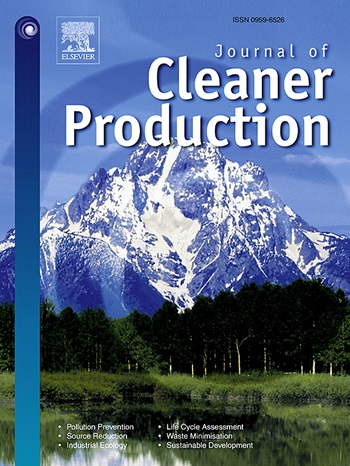开发一种创新的生物复合材料,使用椰子纤维和生物基粘合剂,用于建筑物的热和声学应用
IF 9.7
1区 环境科学与生态学
Q1 ENGINEERING, ENVIRONMENTAL
引用次数: 0
摘要
对轻质多孔结构的持续需求,具有增强的热性能和声学性能,已经成为探索可持续和环保材料的重要驱动力。这项研究工作展示了基于椰子纤维和海藻酸钠设计用于建筑应用的可持续和改进的热声生物复合溶液的发展。研究了不同的混合设计,以研究水和粘结剂含量对样品力学性能的影响。开发的生物复合材料在10%变形时的最大弯曲应力和压缩应力分别为1和1.13 N/mm2,与建筑中使用的传统矿棉溶液相比,显示出优越的性能。基于力学性能,选择了一种生物复合材料配方进行热学和声学表征。此外,为了提高声学性能,已经生产了具有不同表面几何形状的样品。热特性显示导热系数为0.091 W m - 1 K - 1,而吸声平均值(SAA)在0.46 - 0.62之间,使所开发的材料具有良好的吸收能力,适用于混响和回声衰减应用,同时具有良好的隔热性能。这种创新的生物复合材料的开发强调了一种双重用途的生物基隔热解决方案可以有效地用椰子纤维和海藻酸钠生产,具有具有竞争力的隔热和隔音性能,构成了建筑中使用的传统隔热解决方案的有前途和可持续的替代品。本文章由计算机程序翻译,如有差异,请以英文原文为准。
Development of an innovative biocomposite using coconut fibres and bio-based binder for thermal and acoustic aplications in buildings
The continuous demand for lightweight porous structures, with enhanced thermal and acoustic properties has been an important driver for the exploration of sustainable and eco-friendly materials for such applications. This research work presents the development of sustainable and improved thermal and acoustic biocomposite solution based on coconut fibres and sodium alginate designed for building applications. Different mix designs have been examined to investigate the effects of water and binder content on the mechanical performance of the samples. The biocomposite developed exhibited a maximum flexural stress and compressive stress at 10% deformation of 1 and 1.13 N mm−2 respectively, revealing a superior performance when compared to conventional mineral wool solutions used in construction. Based on the mechanical performance, a biocomposite formulation was selected for thermal and acoustic characterization. Additionally, samples with different surface geometries have been produced for improved acoustic performance. Thermal characterization revealed a thermal conductivity value of 0.091 W m⁻1 K⁻1, while a sound absorption averages (SAA) ranging between 0.46 and 0.62 was obtained, making the developed material a well-absorptive solution suitable for reverberation and echo attenuation applications, whilst offering good thermal insulation properties. The development of this innovative biocomposite highlights that a dual purpose bio-based insulation solution can be effectively produced with coconut fibre and sodium alginate, with competitive thermal and acoustic insulation properties, constituting a promising and sustainable alternative to conventional insulation solutions used in construction.
求助全文
通过发布文献求助,成功后即可免费获取论文全文。
去求助
来源期刊

Journal of Cleaner Production
环境科学-工程:环境
CiteScore
20.40
自引率
9.00%
发文量
4720
审稿时长
111 days
期刊介绍:
The Journal of Cleaner Production is an international, transdisciplinary journal that addresses and discusses theoretical and practical Cleaner Production, Environmental, and Sustainability issues. It aims to help societies become more sustainable by focusing on the concept of 'Cleaner Production', which aims at preventing waste production and increasing efficiencies in energy, water, resources, and human capital use. The journal serves as a platform for corporations, governments, education institutions, regions, and societies to engage in discussions and research related to Cleaner Production, environmental, and sustainability practices.
 求助内容:
求助内容: 应助结果提醒方式:
应助结果提醒方式:


